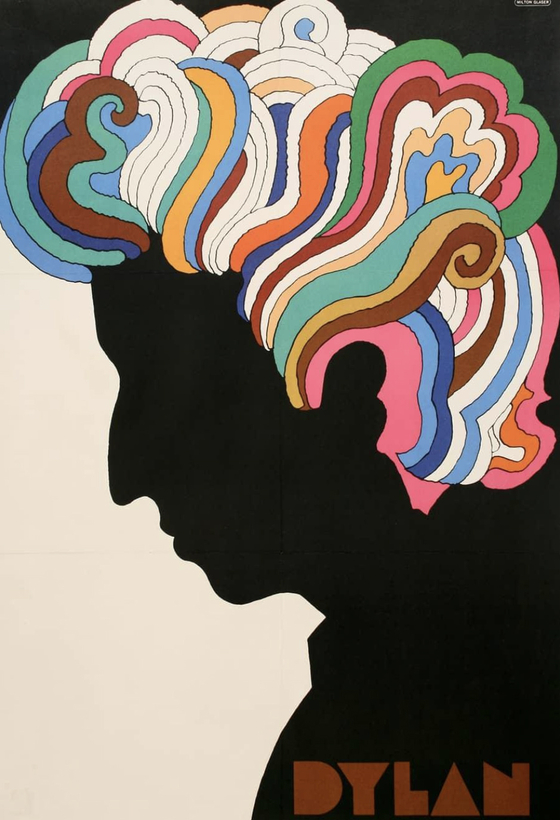I have written about many things over the past quarter century, but the one true through line has been the Bob Project. It is my submission in the contest of life, and with it I will win what’s never been won.
Back in the early 1990s, a job at Time Inc. was a coveted prize for writers. But after a year or so at Money magazine, I was already bored. The only way down the forward path, I concluded, was to start sneaking Dylan references into the magazine. When a few other writers caught wind of my little project, we decided that a contest was in order. The Bob Project was underway.
One point would be awarded for an attributed quote, two points for slipping Dylan lyrics into your own sentence, and five points if you could somehow get a picture of the man into your story. That last one was supposed to be a joke. It was Money magazine, after all.
The contest climaxed in December 1996, when all four of us managed to get references into a single issue—and it was on newsstands before anyone noticed. Amazingly, a friend (hey, Vanessa!) was the first to do so. She sent me a copy of the magazine with Post-Its on those four pages, along with a note: “I see what you’re doing!”
Eventually, I learned that Money’s managing editor, Frank Lalli, had apparently heard about it. Not long after, I was summoned into executive editor Tyler Mathieson’s office. He got right to it: “Four Dylan references in one issue? Frank doesn’t know what’s going on, but he knows you’re involved. And he wants it to stop.” The contest was suspended, and Karen Hube won, having pulled off the seemingly impossible: she’d persuaded the art department to feature a Dylan boxed set—a picture of the man!—in the annual gift guide.
“Make the Right Offer”
Years later, I was making the rounds of the major publishers trying to sell a biography of Jamie Dimon. In the midst of a meeting with Simon & Schuster publisher David Rosenthal, I noticed a copy of Bob’s recently published Chronicles, Volume One sitting on his desk. “Are you a Bob fan?” I said.
“Does being his publisher count?” he replied. “If you sign with S&S to write this book, I will get you an autographed copy of Chronicles.”
“I wouldn’t say that lightly.”
At that point, my agent, David Kuhn, interrupted: “Uh … Duff … ”
Duff, to Kuhn: “I’ve got this, David.”
Duff, to Rosenthal: “If your bid is competitive, then that could be the deciding factor. Make the right offer, and you have a deal.”
S&S’s bid was competitive, so I signed. Alas, nothing was delivered, despite the fact that I reminded Rosenthal of his promise three or four times. He departed S&S in a changing of the guard not too much later, and I have always considered this just.
The Inside Play
In five years of pitching my editor at Vanity Fair, Michael Hogan, about 1 in 10 ideas were Dylan-related. I thought I was making the inside play; Hogan has been involved in the Bob Project, too. When he was executive entertainment editor of the Huffington Post, he wrote a story asking one of the five fundamental questions: “Bob Dylan in Concert: Is It Worth It?”
So God knows how I didn’t see this coming: “Duff, I should have told you this a long time ago, but I just couldn’t bring myself to do it. First, we’re probably not going to run a feature on Dylan unless he dies or something. And even when we do, you’re definitely not going to be the one to write it.”
It was both crushing and somewhat of a relief. Deep down, I’d already known what he’d told me, but still somehow needed him to say those words to me. I’d put him in an impossible situation.
God knows how I didn’t see this coming. I’d put him in an impossible situation.
No matter. Less than a year later, we managed to cook up a Bob story that wasn’t technically a feature but still ranks near the top of my greatest-hits list. Right there, on page 208 of the May 2008 issue of Vanity Fair, you will see a beautifully illustrated homage to the great Milton Glaser poster with my “analysis”—it wasn’t a feature; it was a study—of Dylan’s radio show, Theme Time Radio Hour.
I have slipped Dylan lyrics into everything: New York magazine, Business Week, the Huffington Post, Red Herring magazine. (There are 9 references in this piece alone, by the way.) But there is no era in the Bob Project that can match the robust productivity of my New York Observer stint.

I wrote an occasional column for the paper, called “Up & Down the Street,” from 2012 to 2014. I’d been hired by my buddy Aaron Gell. When Jared Kushner later sidelined him, the new guy, Ken Kurson, asked if I wanted to have breakfast with him to talk about the future. I met Kurson for breakfast across the street from their crappy, cramped offices. We agreed that I should continue the column.
Naturally, that was not the real issue at hand—peek behind most decisions and you will see the scaffolding of the Bob Project holding them up.
“Let’s Do It”
Duff: “I can’t believe I’m going to say this out loud, but it’s true, so here goes: You do not pay me enough money to make this column worth it in and of itself. I’ve made it worthwhile, though, by challenging myself to include references to Dylan in pretty much every single column. If you want me to keep writing for you, you have to let me keep doing it. I’m not kidding. I will not write for you if you don’t let me do this.”
Kurson took a deep breath. What the fuck was I thinking?
“I love Bob. Let’s do it.”
When most people think of Ken Kurson, they think of Jared Kushner and Donald Trump and Rudy Giuliani, and how everything went from bad to worse. But when I think of Kurson, I remember, warmly, how he and I put together a 10-column streak for the Bob Project, from April to November 2013.
My Work Here Is Done
I could go on forever about this subject; I’ve got 25 years of stories for you. But I’ll wrap things up with a few final highlights.
I was too scared to quote Dylan in my first book. And then I forgot to quote him in the second. I made up for it in the third, The Golden Passport, with two references. But here’s one promise to ya: There will be no future books published under my name that are not in accordance with the Bob Project.
My review of Rich Cohen’s latest book, The Last Pirate of New York, is called “Tangled Up in Blood.” His book opens with a Dylan lyric. But I also spotted Rich doing the exact same thing I have been doing for years—dropping Dylan references into stories on the sly. Rich is working on the Bob Project as well. So I can only conclude that all the great writers are doing so.
During the promotional campaign for The Golden Passport, I resolved to slip a Dylan reference into an interview on national TV. Christiane Amanpour had invited me onto her show on CNN. Determined not to forget, I decided to repeat, to myself, a single lyric, over and over, while she was actually asking me questions. Anyone watching the interview now would notice: there is a before and an after of the work of the Bob Project getting done. At first, I am paying only partial attention. And then, somewhere around the seven-and-a-half-minute point, I spit it out: “All the money you make won’t buy back your soul.” And then I visibly relax, and am fully engaged. (In the interview, that is. I am always engaged in the Bob Project.)
After that milestone, I thought to myself: My work here is done.
But it’s never done, really. Most things come to an end, but tomorrow is a long time. The Bob Project is eternal.
Duff McDonald is a New York–based writer. He is working on his sixth book, as well as his continuing commitments to the Bob Project


